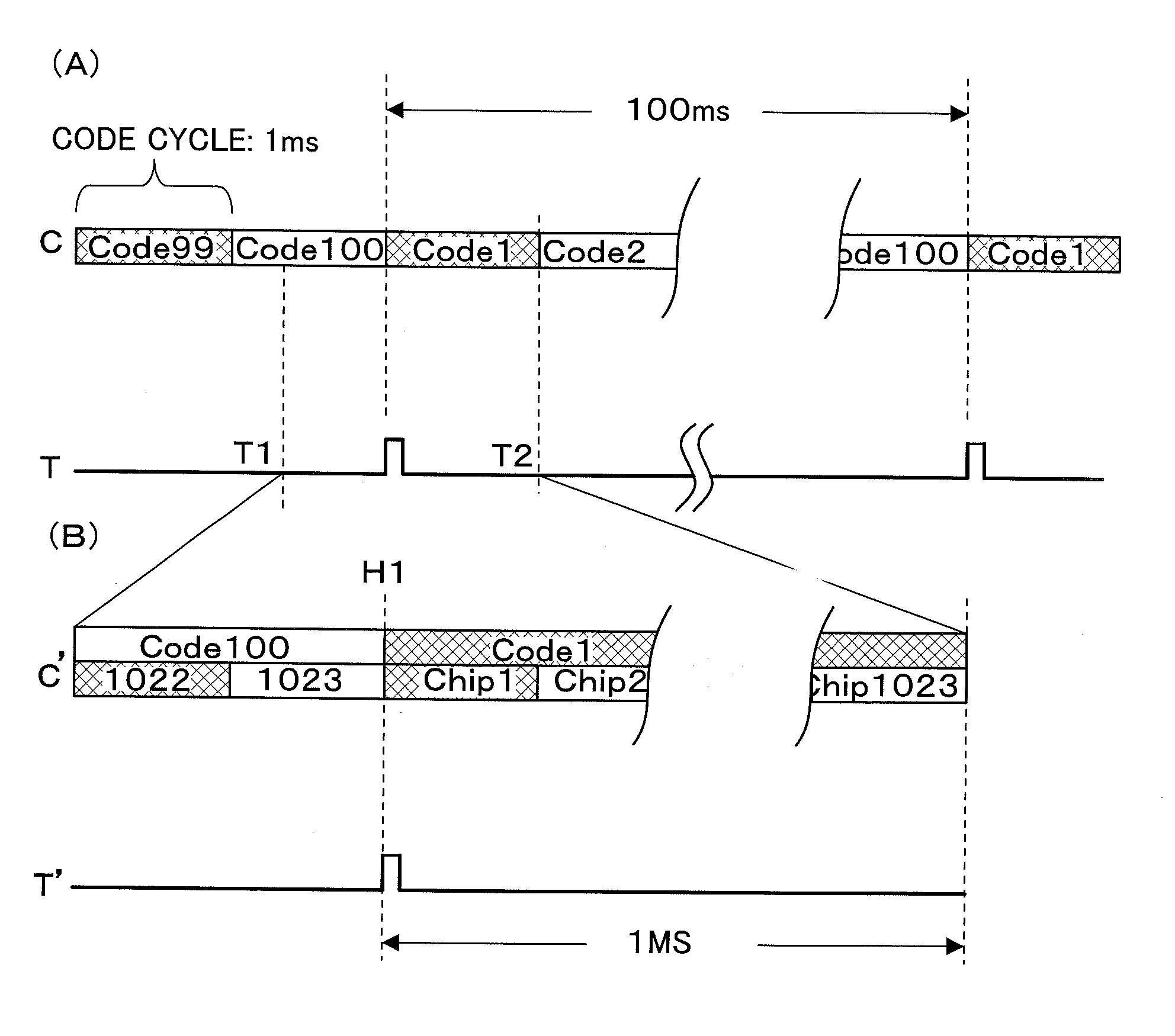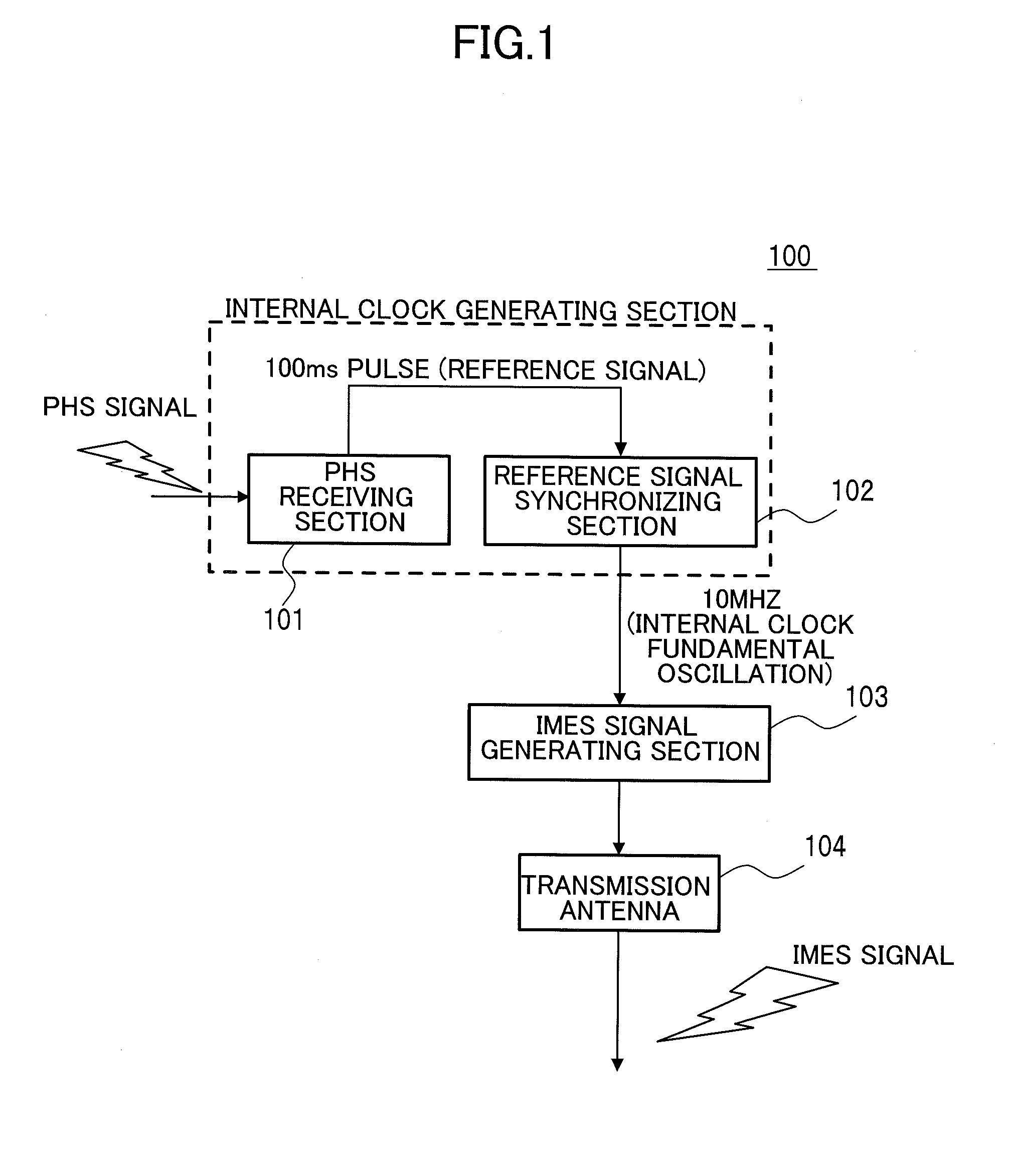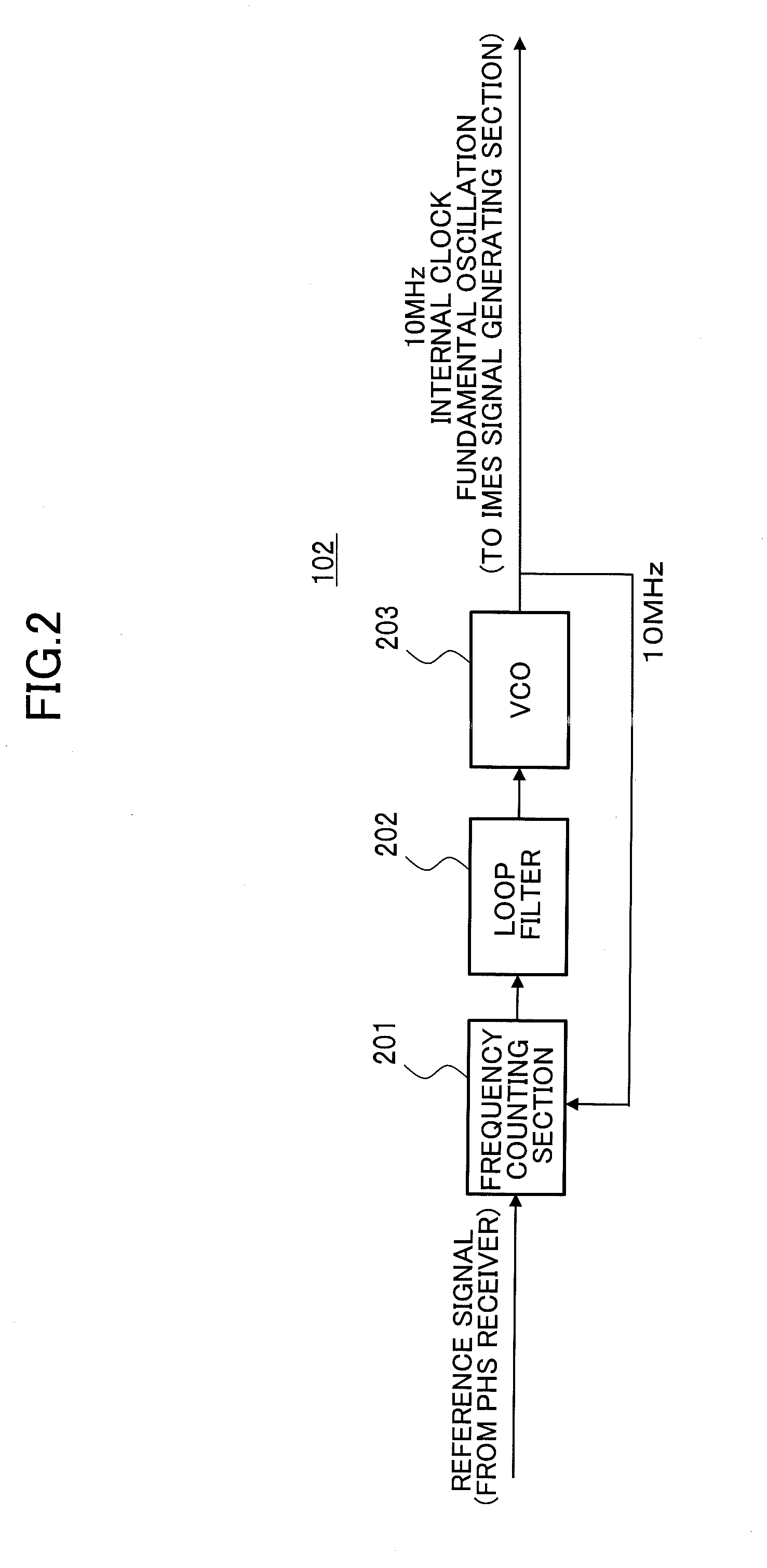Navigation signal transmitter and method for generating navigation signal
a technology of navigation signal and transmitter, which is applied in the direction of synchronisation transmitter, digital transmission, instruments, etc., can solve the problems of high equipment cost, large size, and high oscillator cost, and achieve the effect of reducing the frequency deviation of terrestrially transmitted navigation signals, reducing the use of high-precision and expensive, and improving convenien
- Summary
- Abstract
- Description
- Claims
- Application Information
AI Technical Summary
Benefits of technology
Problems solved by technology
Method used
Image
Examples
embodiment 1
[0042]FIG. 1 illustrates a structure of a navigation signal transmitter according to an embodiment of the present invention. Here, it is assumed in this embodiment that a PHS signal shall be “some kind of signal of an external system (transmission wave)”. The navigation signal transmitter 100 comprises a PHS receiving section 101, a reference signal synchronizing section 102, an IMES signal generating section 103 and a transmission antenna 104. In addition, the PHS receiving section 101 and the reference signal synchronizing section 102 make up an internal clock generating section (which just corresponds to the internal clock generator 231 illustrated in FIG. 2 of Patent Document 1). However, in conventional internal clock generators such as illustrated in FIG. 2 of Patent Document 1, an expensive OCXO (Oven Controlled Xtal Oscillator, which is also called a “temperature controlled crystal oscillator”), for example, is employed in order to secure a high degree of frequency precision...
embodiment 2
[0054]FIG. 5A illustrates, as a second embodiment of the present invention, a structure of the reference signal synchronizing section for making time synchronization in the navigation signal transmitter. A reference signal synchronizing unit 500 comprises a phase comparing section 501, a loop filter 502, a VCO (Voltage Controlled Oscillator) 503 and a frequency divider 504.
[0055]In the phase comparing section 501, a phase difference is measured by using a signal output from the PHS receiving section as a reference signal of the reference signal synchronizing unit to perform a phase comparison with a signal generated by the frequency divider 504 in a PLL section. The measured phase difference is subjected to smoothing in the loop filter 502, converted to a direct current voltage through D / C conversion with an appropriate gain setting, and input to VOC 503. This direct current voltage is proportional to the phase difference between the reference and frequency divided signals, so that ...
embodiment 3
[0058]FIG. 7 illustrates, as a third embodiment of the present invention, a structure for which a radio wave of a mobile phone such as GSM and LTE is employed as some kind of signal of an external system. A navigation system signal transmitter 700 comprises a GSM or an LTE receiving section (designated generically as a receiving section 701) for receiving a GSM signal or an LTE signal, a reference signal synchronizing section 702, an IMES signal generating section 703 and a transmission antenna 704. That is, in this embodiment, the GSM or the LTE receiving section 701 is employed in place of the PHS receiving section 101 to input pulses of 10 ms, 100 ms or 1000 ms as a reference signal to the reference signal synchronizing section 702. It is only necessary in a modification of the reference signal synchronizing section 702 to change the value to be compared with the number of pulses counted by a frequency counter (not shown in FIG. 7) to 10 ms, 100 ms or 1000 ms without requiring an...
PUM
 Login to View More
Login to View More Abstract
Description
Claims
Application Information
 Login to View More
Login to View More - Generate Ideas
- Intellectual Property
- Life Sciences
- Materials
- Tech Scout
- Unparalleled Data Quality
- Higher Quality Content
- 60% Fewer Hallucinations
Browse by: Latest US Patents, China's latest patents, Technical Efficacy Thesaurus, Application Domain, Technology Topic, Popular Technical Reports.
© 2025 PatSnap. All rights reserved.Legal|Privacy policy|Modern Slavery Act Transparency Statement|Sitemap|About US| Contact US: help@patsnap.com



